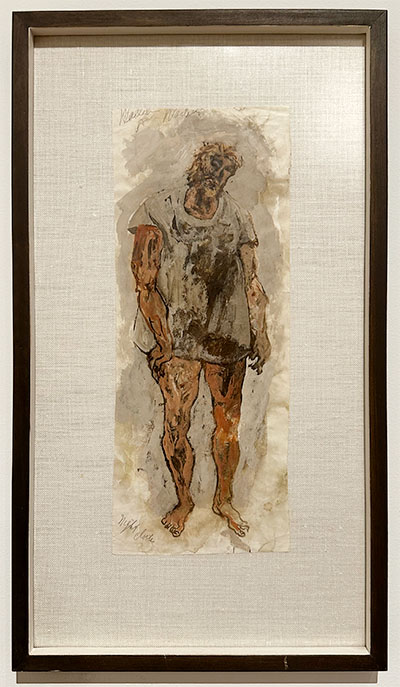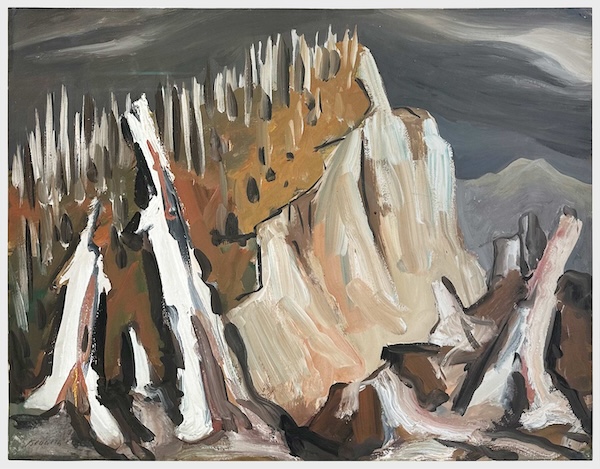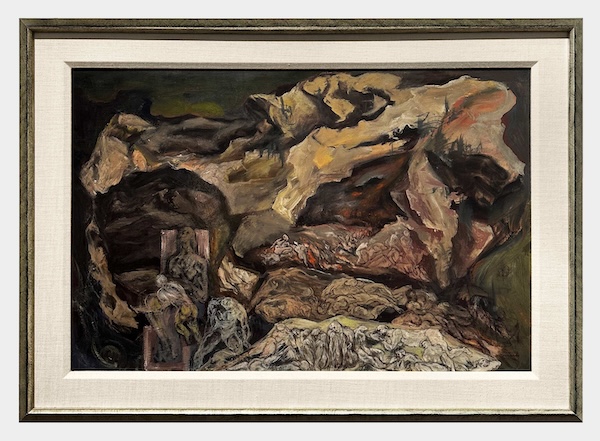|

NIGHT CLOTHES, 1972
Tempera on paper
15.5 x 6 inches
$2,000

SILVER TREES, circa 1930s
Tempera on paper
14 x 18 inches
$10,000

THE UNAWAKENED, 1953
Tempera on paper
20 x 30 inches
$16,000
Kenneth Callahan was born in Spokane, Washington and is considered a noted 20th century artist. Largely self-taught, he travelled extensively through Europe, Latin America, and the United States. He was a self-taught painter and sculptor known for his abstractions based on natural forms of the Northwest region, often basing his designs on cross-sections of local stones and other formations. He made Seattle his home in 1929.
Along with Guy Anderson, Morris Graves and Mark Tobey, Callahan founded what is known as The Northwest School - an art movement based in small-town Skagit County, Washington, at its peak in the 1930-40s. These artists combined the natural elements of the Puget Sound area with traditional Asian aesthetics to create a novel and distinct regional style, particularly in painting and sculpture with some drawing, printmaking and photography. All of these artists were from a similar age group, and all were greatly influenced by the Pacific Northwest environment. The influence of the natural setting of Western Washington, especially the Skagit Valley, was the unifying aspect of their art.
Callahan was the Curator Painting at the Seattle Art Museum from 1933-53. He was a recipient of a Guggenheim Fellowship in 1954.
His works are featured in many significant private, corporate, and museum collections throughout America including the Corcoran Gallery of Art, Hirshhorn Museum and Sculpture Garden, Brooklyn Museum of Art, Seattle Art Museum, MoMA, Guggenheim Museum and Whitney Museum of American Art.
"For me there are two sources of art: nature and the art of the past. The past is all-inclusive, from cave painting to the thing produced yesterday by the artist around the corner. Nature is the most important.... It is nature, with its unlimited varied form, structure and color that constitutes the vital living source from which art must basically stem."
—Kenneth Callahan
|